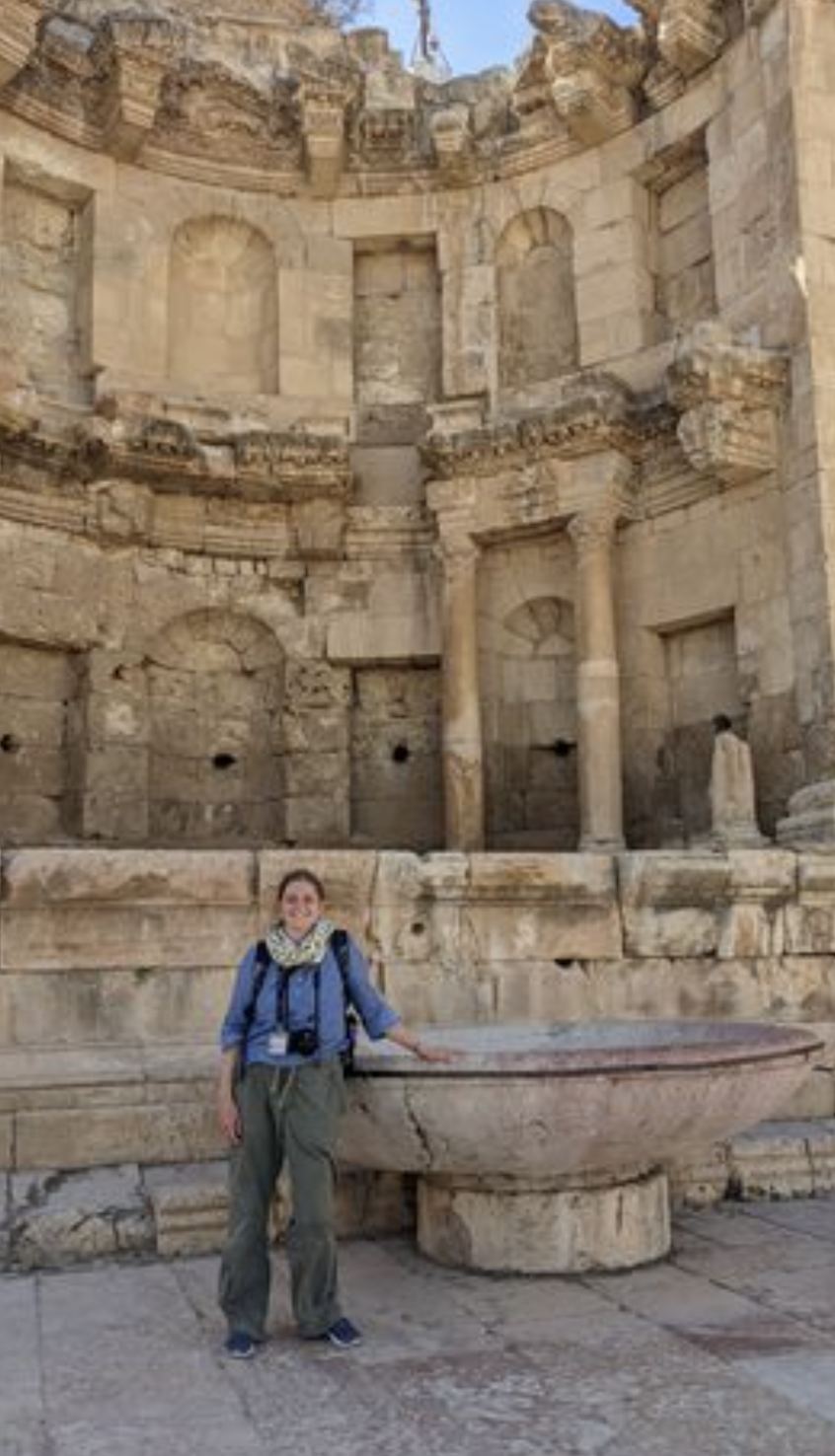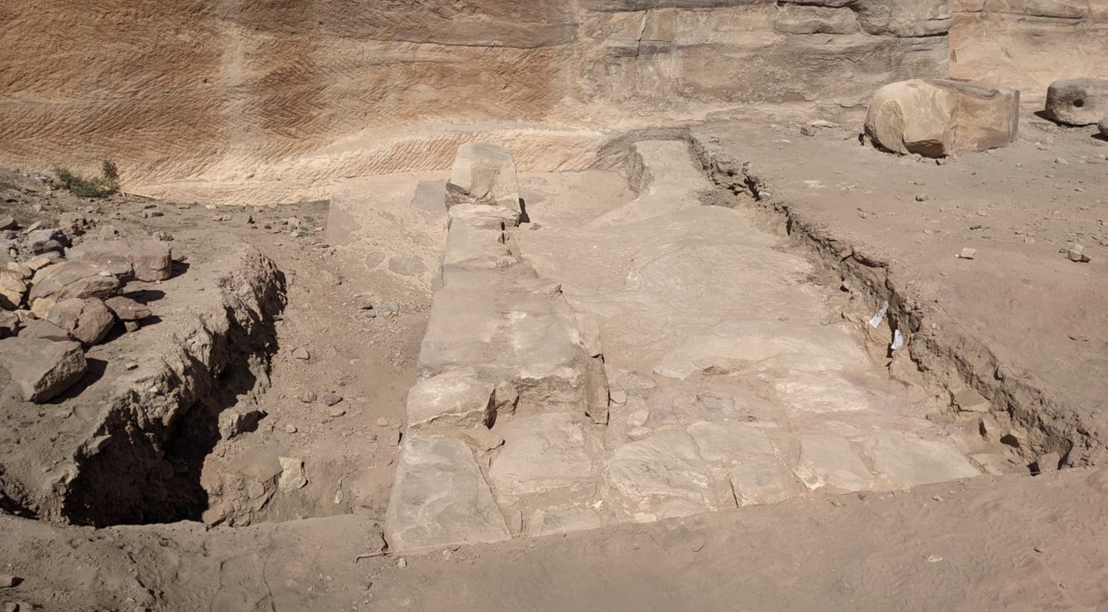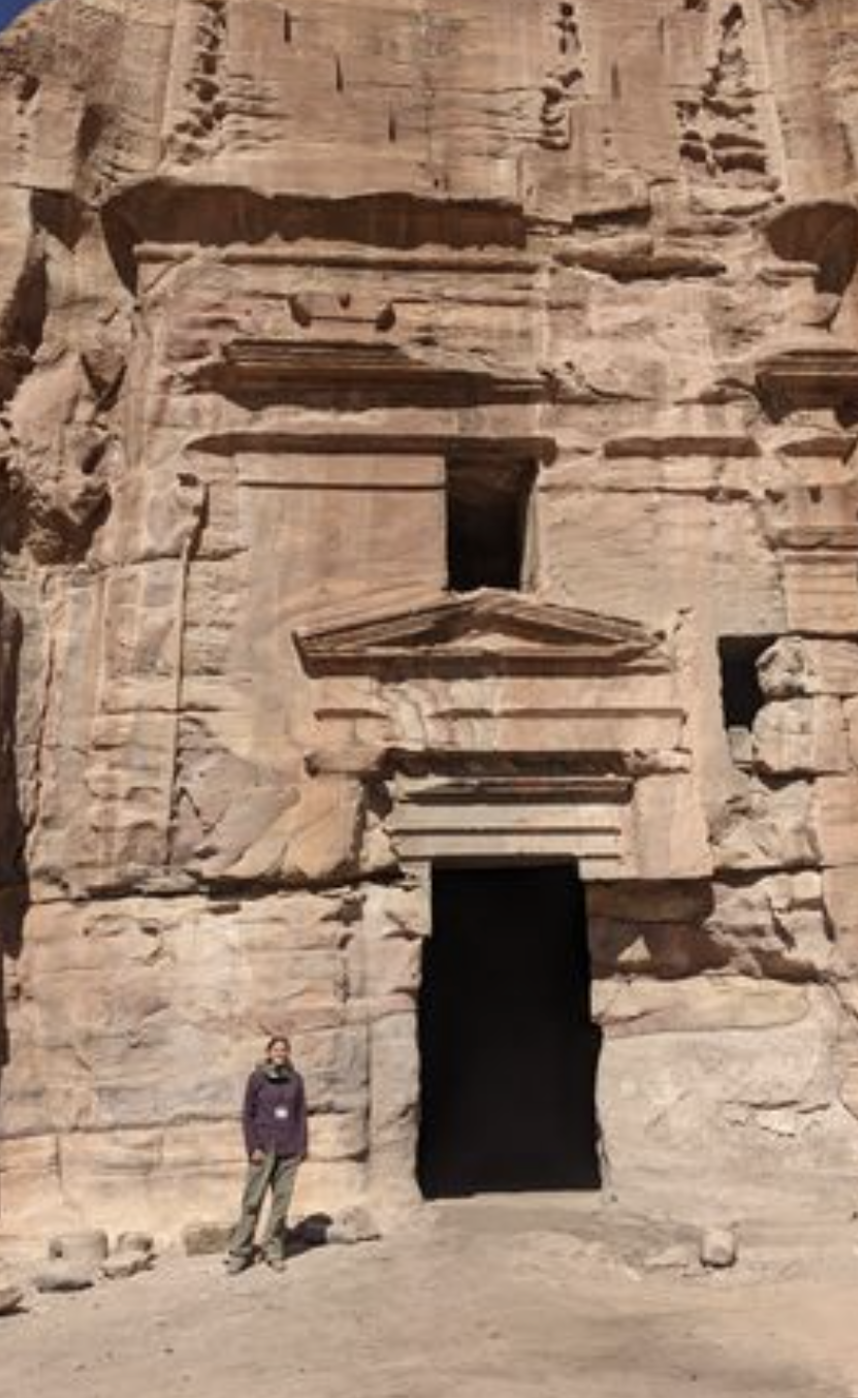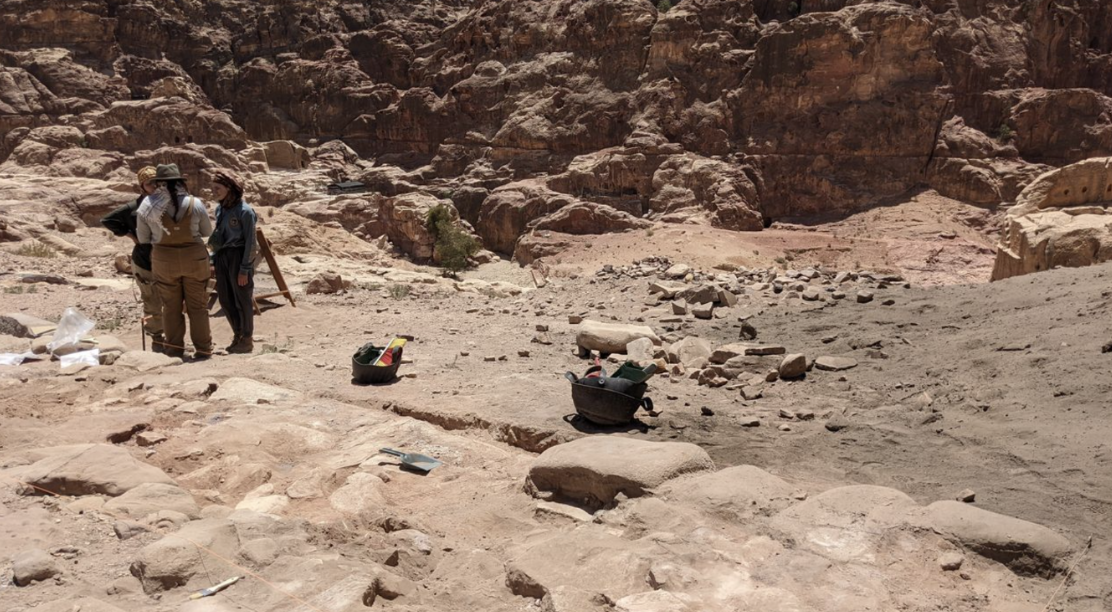
Petra: A Long-Expected Journey
Emily Yankura, P.E. MacAllister Scholarship for Fieldwork Participation
My field experience in Jordan this past summer was one which was both long awaited and highly anticipated. I was originally scheduled to participate in the 2020 field season but, for obvious reasons, was unable to go until this past summer. It was an experience that was well worth the wait!
To be honest, I was initially very nervous to be finally leaving for Jordan. This trip had already been delayed so many times that a part of me thought I would graduate before I could go, and the prospect of now actually having to face the challenges I knew were coming was daunting, to say the least. I would be surrounded by a new language and culture, working outdoors in a desert climate, and hiking to site every day in said climate. There would be new food, new physical challenges, new customs – and that wasn’t even touching on the new tools and strategies I was going to have to learn for archaeological field work.
Now, though, I am so glad I went, and so glad I was able to go! I was able to acclimate relatively quickly and soon found myself appreciating the language and culture of Jordan. There were so many differences, large and small, as well as similarities, that had me thinking twice about my own cultural biases. And, once we began excavations, I was relieved to find myself up to the challenge.
I spent the first three weeks of my time in Jordan excavating in Wadi Mataha with Dr. David Johnson, and then an additional two weeks excavating on the Ad Deir Plateau with Dr. Cynthia Finlayson, under the direction of Dr. Allison Lee as crew chief. Throughout our two months in Jordan our group also had the opportunity to visit various historical and cultural sites. All of these experiences together were an invaluable learning opportunity and opened my eyes to the incredible nature and value of Middle Eastern culture. I gained an appreciation for both the ancient and modern inhabitants of this area by visiting the sites, and through daily interactions with local residents and workers.
My favorite aspect of archaeology is the connection it allows me to feel with the past. I have experienced this before with written reports and theory, but I was thrilled to experience it in actual hands-on fieldwork as well. While excavating, Dr. Lee would often ‘quiz’ us on what we were seeing in the soil – ashy lenses, certain types of artifacts, soil composition – and challenge us to connect those smaller details with a larger picture. These brainstorming sessions were meant as field theories and first impressions, to be checked against further research and site reports later on, but it helped me personally to see how several sherds of coarseware pottery could connect me to the lived experience of ancient Nabataeans at a specific moment in time. It also helped me to better understand how archaeologists transition from digging and uncovering artifacts to using them for analysis. These artifacts we were uncovering would help us to build a picture of the ancient civilization that had left them behind. Archaeologists are actively reconstructing ancient cultures in an attempt to better understand them – and, by extension, ourselves.
At Ad Deir, I learned the value of archaeological context. The area I was assigned to work in was a portion of the Great Circle, which was a water feature/pool on the plateau. In ancient times it would have been filled by seasonal rains; this meant that many of the artifacts we were recovering there had been washed in by water and erosion. Before beginning, I did not fully understand how context could still be derived from objects which had been so clearly taken out of theirs. Now, I know that even these types of objects have value: the different stratigraphic units (SUs) of the Great Circle provide a relative chronology, and within that the types of pottery we find (coarseware, fineware, painted wares, etc.) can help us to know what was being used when. For example, one of our SUs showed a large concentration of pottery and burned bone, along with multiple ashy lenses. This could be an indicator of a cooking and/or eating space, which would mean that the Great Circle was already out of use as a water collector at that time.
The trips we went on were also very educational. They exposed us to other parts of Nabataean culture that were either not present at either of our sites or else still under excavation. Dr. Johnson took us on a tour of Wadi Mataha that showed us the broader context of the tomb complex that we had been excavating. We saw a sprawling network of dozens of other tombs, cisterns, and water channels, most of which remain unexcavated. On a later trip to Little Petra and a High Place we saw what Nabataean worship may have looked like. These glimpses into the broader scope of Nabataean society helped me to better understand the objects and features we were finding back on site.
The most exciting moment of the entire two months, for me, was finding an amethyst bead at the Wadi Mataha site. My Master’s thesis research has been on jewelry found in burial contexts, so when I saw an amethyst bead in the screen it felt almost unreal – I had spent so much time reading about objects like these and looking at small, black-and-white photos of them, that it was hard to believe I now had one right in front of me! There was an inexplicable feeling of connection as I dusted it off to reveal the carefully drilled holes on either side. Someone, a long time ago, had taken the time to take a beautiful stone and shape it into something that could be worn. A human being had created beauty for the sake of beauty (and possibly profit), and it had survived two thousand years to end up in my hand.
My experiences in Jordan are ones which I will never forget. It is a country rich in history and culture, and I hope that one day I will be able to work there as an archaeologist once again!
Emily Yankura is a Master’s student at Brigham Young University studying archaeology and museum studies. Her main areas of interest are the history of the ancient Near East and the portrayal of archaeology in popular media.
American Society of Overseas Research
The James F. Strange Center
209 Commerce Street
Alexandria, VA 22314
E-mail: info@asor.org
© 2023 ASOR
All rights reserved.
Images licensed under a Creative Commons Attribution-NonCommercial-ShareAlike 4.0 International License
COVID-19 Update: Please consider making payments or gifts on our secure Online Portal. Please e-mail info@asor.org if you have questions or need help.




